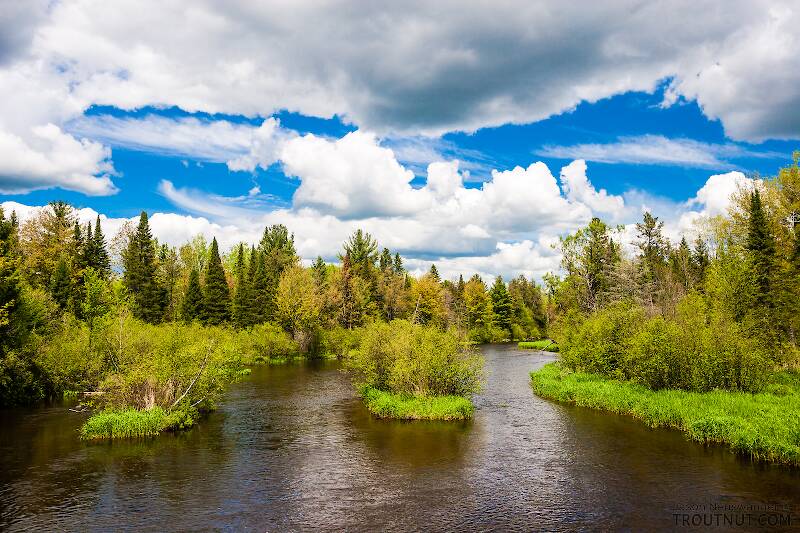
Blue-winged Olives
Baetis
Tiny Baetis mayflies are perhaps the most commonly encountered and imitated by anglers on all American trout streams due to their great abundance, widespread distribution, and trout-friendly emergence habits.


Mayfly Species Ameletus similior (Brown Duns)
Species Range
Physical description
Most physical descriptions on Troutnut are direct or slightly edited quotes from the original scientific sources describing or updating the species, although there may be errors in copying them to this website. Such descriptions aren't always definitive, because species often turn out to be more variable than the original describers observed. In some cases, only a single specimen was described! However, they are useful starting points.
Male Spinner
Wing length: 9 mm
A medium-sized species, distinguished by the dark heart-shaped ganglionic marks on venter of abdomen. Wings with faint clouds.
Head and thorax shiny blackish brown, in the male. Fore legs blackish brown; middle and hind legs lighter brown. Wings hyaline, veins dark, palest along the outer margin; some are faintly clouded with light umber brown, in the male.
Abdomen deep brown with lighter brown shading, the posterior margins definitely brown-ringed. Dark heart-shaped marks on ganglionic areas of sternites. Tubercles on the apical margin of the forceps base, between the forceps, rather poorly developed. Penes rather long and slender, only slightly incurved near the tip: each bears one or more spines on the inner margin (see fig. 117).
Female Spinner
Wing length: 9 mm
In the female, the thorax is rather bright reddish brown. Subanal plate of female rather small, covering less than half the tenth segment.
Start a Discussion of Ameletus similior
References
- Needham, James G., Jay R. Traver, and Yin-Chi Hsu. 1935. The Biology of Mayflies. Comstock Publishing Company, Inc.
Mayfly Species Ameletus similior (Brown Duns)
Species Range
Common Name
Resources
- NatureServe
- Integrated Taxonomic Information System
- Global Biodiversity Information Facility
- Described by McDunnough (1928)

